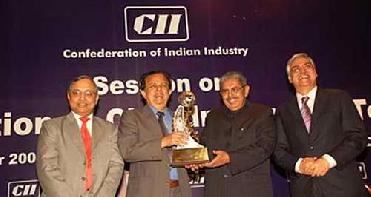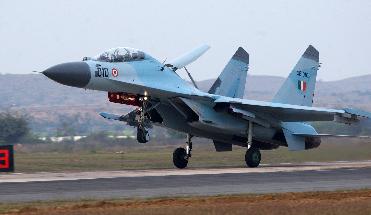
Pawan Hans is India's biggest private helicopter operator. A Eurocopter photo
NEW DELHI (BNS): In view of the high terror threats, a new set of security guidelines would be issued in the next few days for helicopter operators to report mandatorily to the local police before making landings at any unscheduled place.
Investigations after the Mumbai attacks by both Indian and international intelligence agencies had thrown up evidence that Pakistan-based terrorists will try and hijack helicopters to crash them onto high value targets such as atomic installations and refineries. An alert was issued by the Intelligence Bureau last week to the Bureau of Civil Aviation Security. The proposed guidelines come in the wake of the specific terror alert, sources said.
Under the proposed guidelines, if a helicopter is scheduled to land at an unscheduled place, the local police authorities there would have to be informed in advance about the flight plan as well as the identity of persons it would be carrying, official sources said.
The move, which may not find favour with politicians or corporates, is aimed at ensuring that no unauthorised person travels on the helicopters and their destinations are also known, the sources said, pointing towards the possibility of terror threats from the sky.
The directorate general of civil aviation is likely to issue standard operating procedures or detailed instructions in this regard in the next few days, the sources said. While the state-owned Pawan Hans Helicopters Limited and some other large firms have their own full security manuals, many of the small private firms or corporate houses or high-end individuals, owning choppers, do not have such guidelines.
The DGCA has also sought security from either state police forces or central paramilitary forces at helipads and make-shift helipads which come into vogue mostly during elections.
Intelligence agencies are worried about the possibility of terrorists chartering helicopters for a spectacular terror threat. The agencies had also issued a warning about an aerial attack on atomic station in Kalpakkam near Chennai. Based on the warning, the government has declared Kalpakkam a no-fly zone.
Days after an audacious firing assault on an IAF helicopter on November 14 by Maoists, the DGCA had issued directions to pilots to ensure that minimum 1,000 feet height was maintained while flying over populated areas. In this case, a flight engineer was killed when suspected Maoists fired on the low-flying Mi-8 helicopter in Chattisgarh's Bijapur district when it was ferrying sealed Electronic Voting Machines.
The aviation regulatory body has also made it mandatory for a pilot to use the Radio Altimeter, an aid for measuring vertical separation between land or water surface and the chopper.
The helicopter operators have been asked to ensure that their pilots are adequately briefed and that the choppers, which were being used for low-level flying, were equipped with Radio Altimeters. There were two accidents in recent months, which claimed a total of five lives. On August three, a Bell-403 chopper of Ran Air, hired by the Chhattisgarh government, went missing with two pilots and as many crew members. Its wreckage was found on November 12. An army helicopter crashed in eastern Ladakh, killing two majors on August 16.
In yet another case, a helicopter had strayed into the Bangladesh territory on September 8 while flying from Agartala to Dhalai in Tripura, creating a diplomatic problem. In the past few weeks, the usage of helicopters had been on the rise because of the assembly polls in six states.
The DGCA came out with the directives following reports that many helicopters, while conducting aerial surveys or other missions, descended below the prescribed height and flew on such "ultra low" altitudes for prolonged durations, compromising flight safety and endangering lives of people.
 Previous Article
Previous Article Next Article
Next Article













The Indian Air Force, in its flight trials evaluation report submitted before the Defence Ministry l..
view articleAn insight into the Medium Multi-Role Combat Aircraft competition...
view articleSky enthusiasts can now spot the International Space Station (ISS) commanded by Indian-American astr..
view article